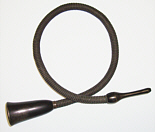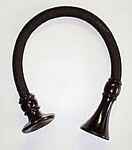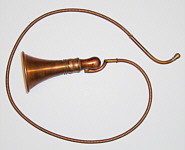 |
 |
| A short conversation tube measuring 14 inches long, made by Aloe, circa 1895. | Arnold's Flexible stethoscope measuring 28 inches long, circa 1890. |
 |
 |
| A short conversation tube measuring 14 inches long, made by Aloe, circa 1895. | Arnold's Flexible stethoscope measuring 28 inches long, circa 1890. |
 |
 |
 |
| Flexible Piorry Stethoscope, circa 1835. |
 |
 |
| Flexible stethoscope with rubber cushion or converstaion tube, circa 1850. | Conversation tube made by Luer, circa 1850. |
 |
| Re-educative binaural tube, Mayer & Phelps, circa 1931. |